My IBM PS/2 Model 80 8580
pictures belowThe IBM PS/2 Model 80 was introduced in March 1987. It was the first 386 computer from IBM and was used to introduce a number of new standards. Most notably there is VGA graphics onboard with 256 kB RAM. The bus system is Microchannel Architecture (MCA) with 32 bit width, card identification and configuration by BIOS and RGB video signal route through. By default a 1.44 MB 3.5" disk drive was used. For memory extension PS/2 standard RAMs (with parity) are used. The computer also comes with a pointing device, that is commonly called 'Mouse' nowadays.
My IBM computer configuration is already a bit upgraded:
It has a ceramic Intel 386DX-16 CPU and a i80387 FPU. There are 2x 1 MB RAM as a PCB board plugged to the mainboard and VGA on board. The default 1.44 MB 3.5" disk drive is installed as well as an additional 1.2 MB 5.25" disk drive. The hard disk drive is a 71 MB MFM disk connected to a ESDI controller. As additional MCA cards there is a 8514/A graphics card with 1.5 MB RAM, a dual serial card with 16550 FIFOs and a memory expansion card with 4x PS/2 slots where 3x 2 MB PS/2 RAM with parity is installed. This sums up to 8 MB of RAM. Later I added a Thomas Conrad TC5046 network adapter card (10 MBit/s, RJ-45) and due to a lucky situation I got another 3Com Etherlink III MCA. I also bought a Adlib MCA sound card that was however dead on arrival (yay ebay).
The documents do not indicate the exact date when the computer was bought. However it must have been after September 1987 as the German Federal Mail License "Antrag auf Genehmigung zum Betrieb eines Hochfrequenzgeraets" is dated to 9th September 1987. The system had installed IBM DOS 5 as well as Microsoft Windows 3.1. I replaced Windows 3.1 with Windows for Workgroups 3.11 as it has easier to handle network support.
The 8514/A graphics adapter is capable of showing 1024x768 at 256 color and features graphics acceleration functions such as lines, rectangles and even BitBlt. For details consult 8514.TXT. As the 8514/A is not VGA compatible IBM provided an own programming API that can be accessed by loading the TSR program HDILOAD.EXE from the 8514/A disk. There is also HDIDEMO.EXE that shows a few graphics examples with effects. HDIDEMO requires the HDILOAD TSR. There exists also Mah Jongg for 8514/A. For normal operation there are not two monitors required. While regular text modes and VGA modes are provided by the on board chipset the video signal is routed over the MCA bus and available at the 8514/A port. When using a 8514/A mode the card takes over.
Windows 3.x provides 8514/A drivers and even implements acceleration functions for GDI acceleration. It does not require to load HDILOAD. For full screen DOS windows it switches between the on board VGA and the card. The 8514/A uses 43 Hz interlaced at 1024 resolution that doesn't look as bad with the right CRT as the mode suggests. This mode was later used as default for Super VGA cards.
The 8514/A comes with an extra 8514/A mouse driver disk that includes the 'Microsoft (R) Integrated Mouse Driver Version 1.01.16' (MOUSE.COM) and 'Microsoft (R) Integrated Mouse Driver Version 1.00' (MOUSE.SYS). Both files include 8514/A and EGA/VGA device driver parts from IBM as well.
I got the Thomas Conrad TC5046 ethernet card as is with just the manual. With a MCA system this poses the problem that the BIOS requires a configuration file for the card to get it running. The card has the ID @006C and those configuration files were not available in the common MCA databases. However the manual had some register descriptions which allowed me to write a ADF file from scratch after a lot of trial and error for all the bits. A few years later Wolfgang Gehl contacted me with a ftp link to some server at HP where I could find the original files for the card. (Thanks.) The server is not available any more, however I can provide here a local copy of the Thomas Conrad TC5046 files. The card itself was manufactured in 1992, has a RJ-45 connector, supports 10 MBit/s and Auto Negotiation. As this predates Windows for Workgroups 3.11 (WfW 3.11) the card has driver for it. However it has a ODI driver and WfW 3.11 is able to use any ODI capable network adapter with ODIHLP.EXE that comes with Windows. Here is a ready to use DOS-ODI 32 bit package with IPXODI.COM (use n.bat). For usage with Windows it is not required to load the DOS IPXODI protocol driver. The 32 Bit driver works when the card is plugged to a 32 bit MCA slot. I could not find the 16 bit ODI driver for the card that is required if the card is plugged to a 16 bit slot. There exists also a Ethernet Tool program that can detect the card and configure cards for other bus systems such as ISA.
The 3Com Etherlink III has an AUI and RJ-45 connector and was also manufactured in 1992. It is a very common card and the default tools and drivers work as well with the MCA version of the card. Interestingly the peak achievable network transfer rate is better with the Thomas Conrad card despite that it is using the ODI wrapper for WfW 3.11.
I can not say much regarding the Adlib Music Synthesizer card. It does not get detected by the BIOS and the OPL2 chip is not appearing at port 388h. My guess at the moment is that the Chips P82C611 that controls the MCA interface is broken.
As a rather simple solution I use a Covox Speech Thing rebuilt for the parallel port.
The average performance of the machine is mixed. The early cacheless 386 performs as expected. Vidspeed shows that the on board VGA is using an 8 bit width interface. However everything on the 32 bit MCA bus is very fast compared to e.g. an ISA system. So even the 6 MB RAM expansion on a card is not much slower than the direct plugged RAM boards. Using the Covox Speech Thing it can play 4 channel tracker music in Inertia Player 1.24 with 24 kHz and 24 Bit interpolation in 8 bit. Also Cronologia by Cascada as well as Pinball Fantasies work very well with sound. Tritons Crystal Dream demo runs as well, however it takes a while between each part. I had the system setup in the last years at the Long Night of Computer Games in Leipzig. Games running well incl. Commander Keen 1, 4, 6, Xenon 2, Prince of Persia, Pinball Fantasies and more...
In WfW 3.11 Space Cadet runs, which was part of the Windows 95 Plus package. Also the 16 bit version of Total Comamnder and mIRC, as well as IrfanView and Opera 3.52. The performance is limited in Opera mainly due to the 8 MB of RAM. Another game that runs is Sim City 2000 in WfW 3.11 in 1024x768 resolution. Considering the games release in 1994 it states to require a 486DX-33 as minimum on the box and as expected when the City grows to a complex scene the performance drops a lot.
Software:
A Mouse which was still called 'pointing device' came by default with the Model 80 and IBM delivered a Mouse Driver. Internally these are mouse drivers programmed by Microsoft with Version 1.00 (1987) and 1.10 (1989).IBM Mouse Driver 1.00
IBM Mouse Driver 1.10
Pictures:
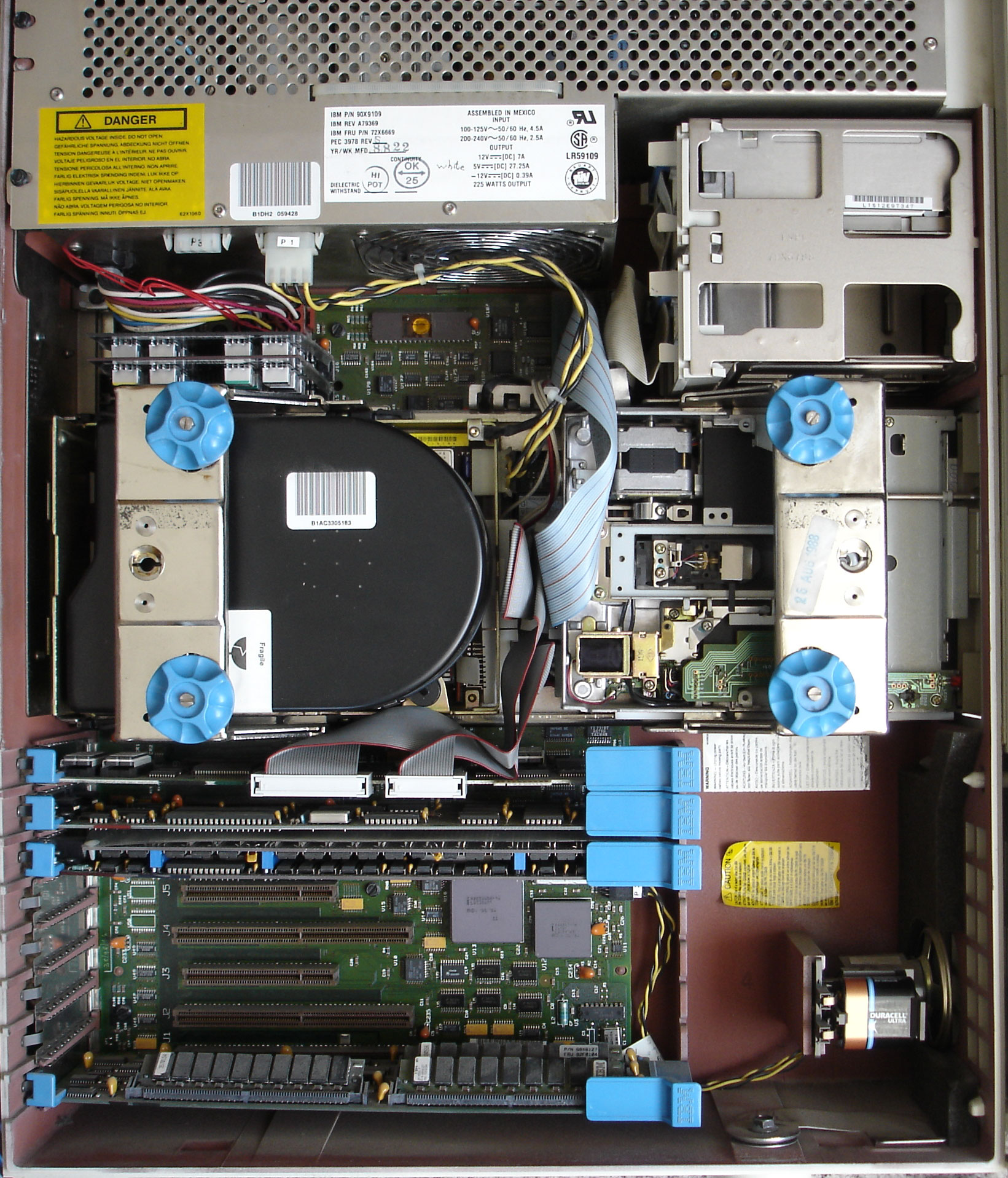
Inside the IBM PS/2 Model 80 8580 without network adapters.
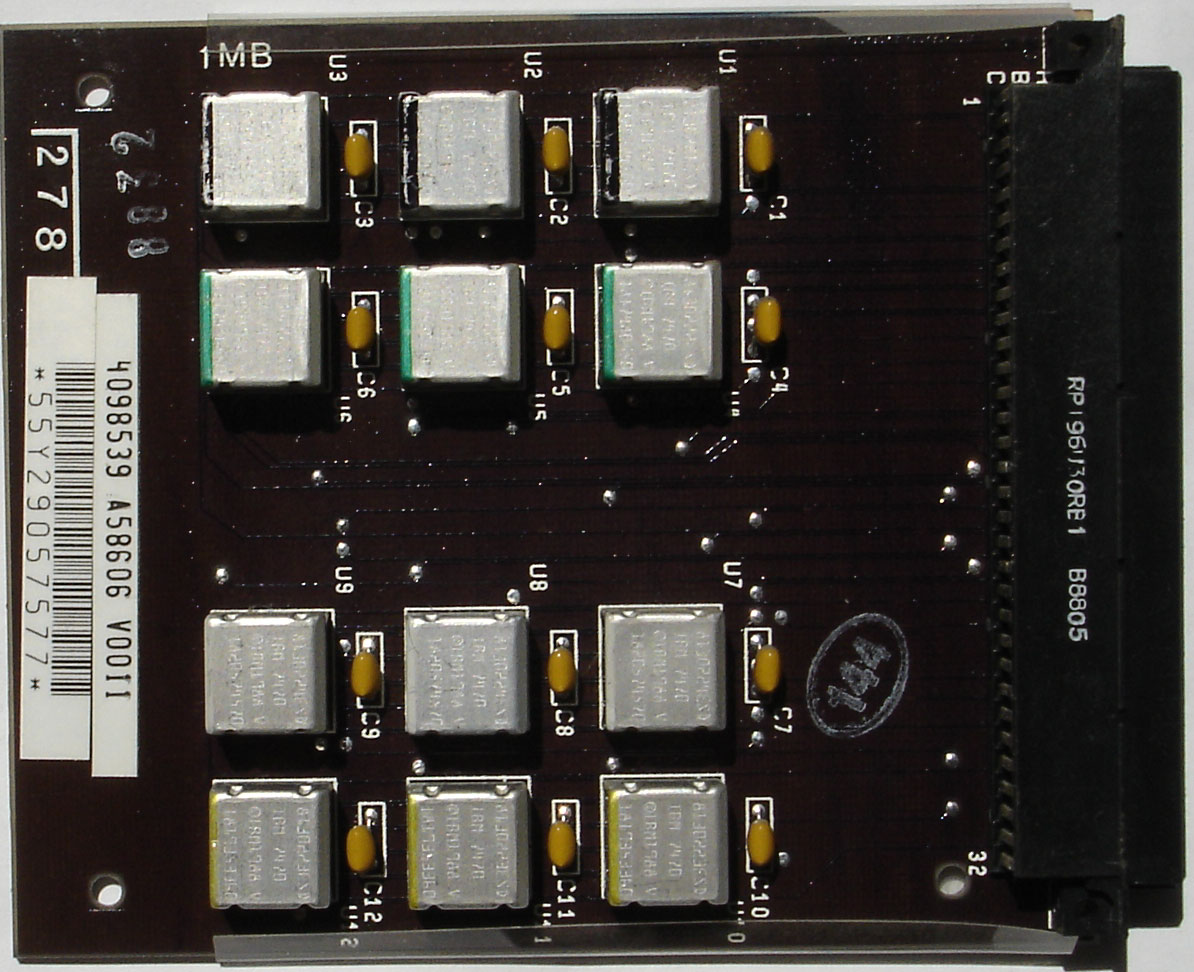
1 MB DRAM on a small PCB that is to be plugged on the mainboard.

Dual serial card with 16550 UARTs. These UARTs have a 16 byte FIFO buffer and allow baud rates up to 115200 baud without data loss due to I/O interruptions, such as writing data to hard disk. In regular PC systems these UARTs became common on Pentium mainboards. Notable on the chips there is still written Patent Pending.

RAM expansion board with 4 PS/2 RAM slots. On the card are 3x 2 MB PS/2 RAM with parity. The RAM appears additionally to the 2x 1 MB on board. One slot is still free, however it requires a RAM with parity, correct size and correct memory presence detect pinout.

ESDI HDD controller.
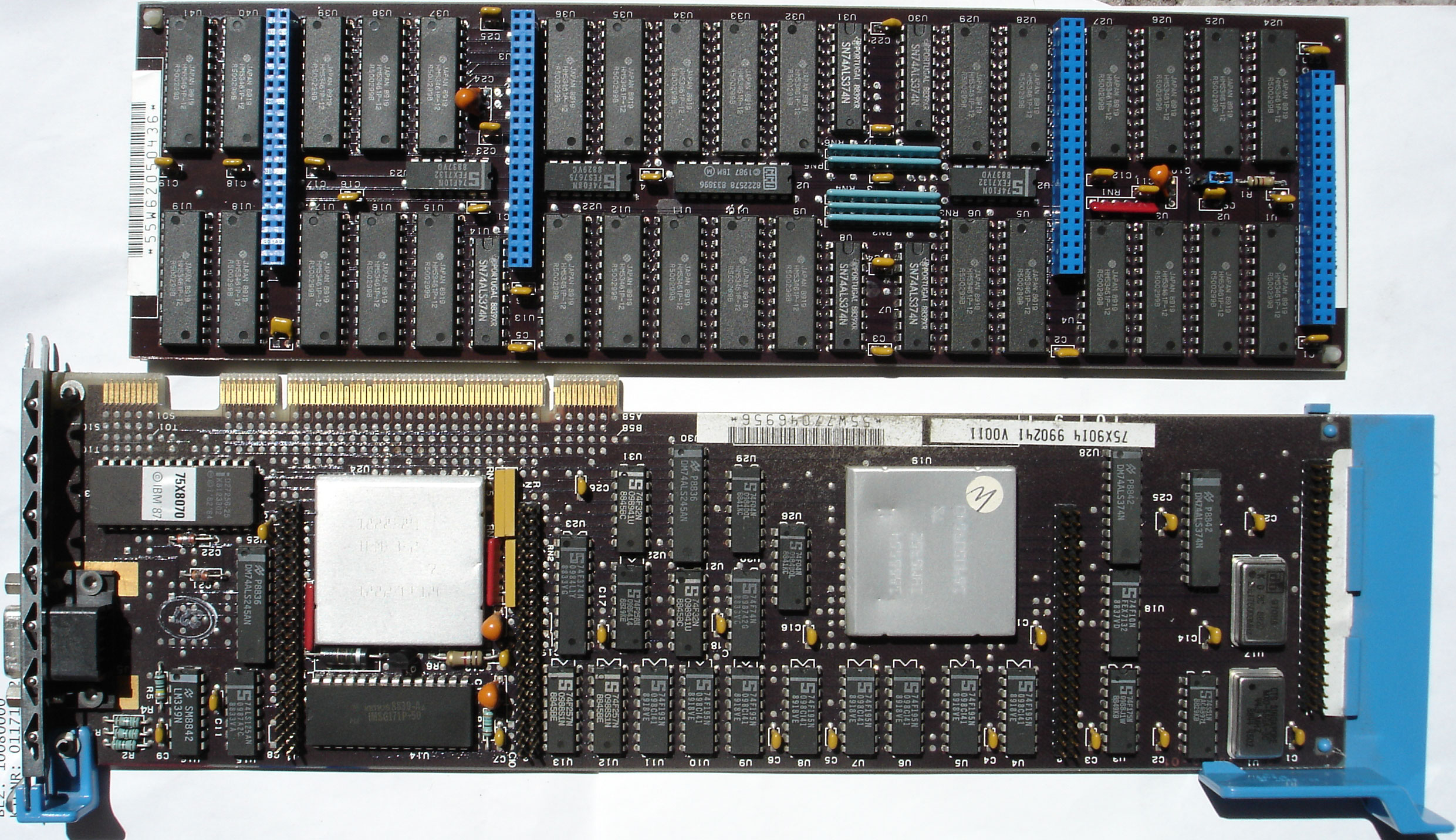
IBM 8514/A graphics adapter. It is a double PCB sandwich where the upper board carries the RAM and the lower board the control logic. The upper board has 1.5 MB RAM.

Thomas Conrad TC5046 network adapter. RJ-45 connector / 10 MBit/s / Auto-Negotiation.
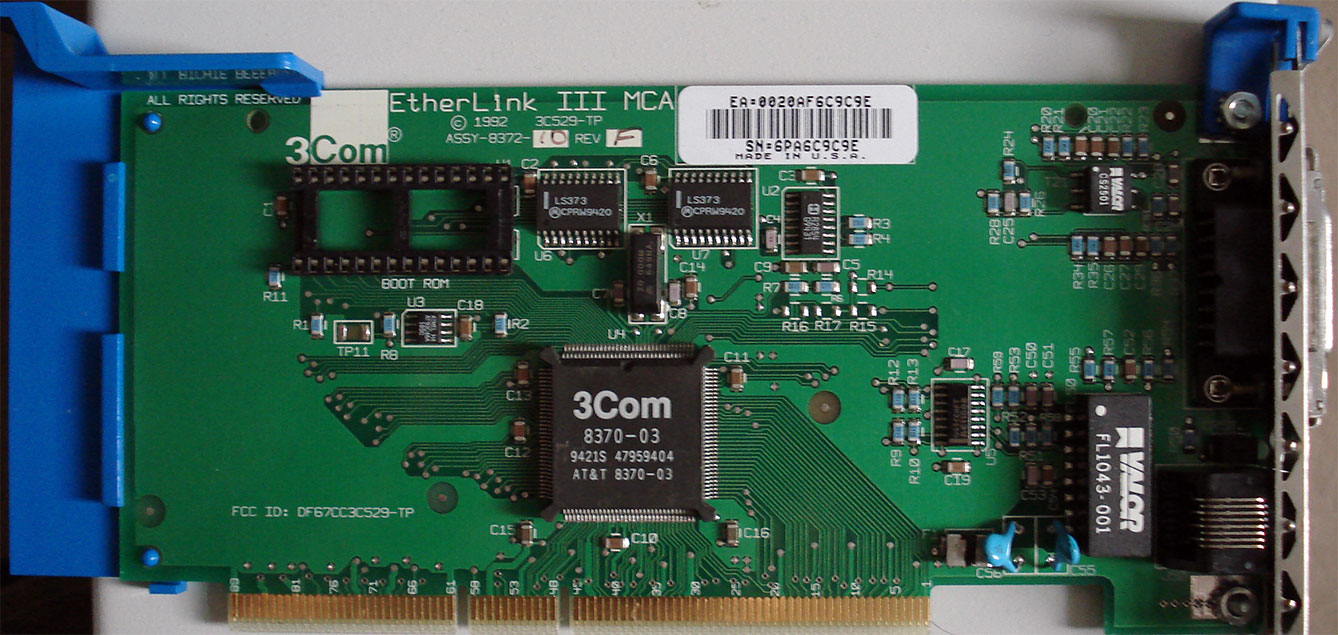
3Com Etherlink III MCA based on the 3Com 8370-03. Type 3C529-TP, manufactured 1994, FCC-ID: DF67CC3C529-TP.
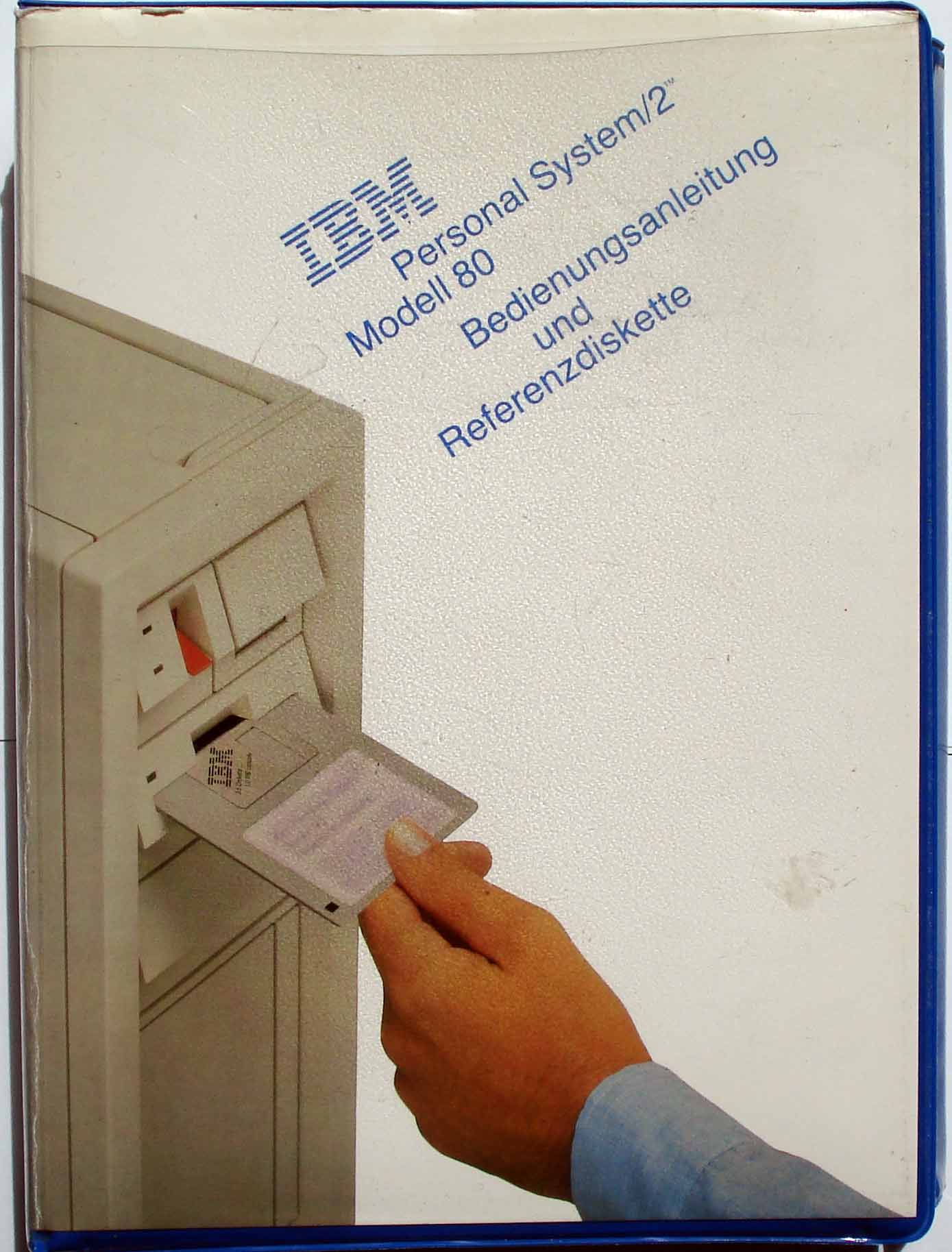
Computer manual folder cover (german).
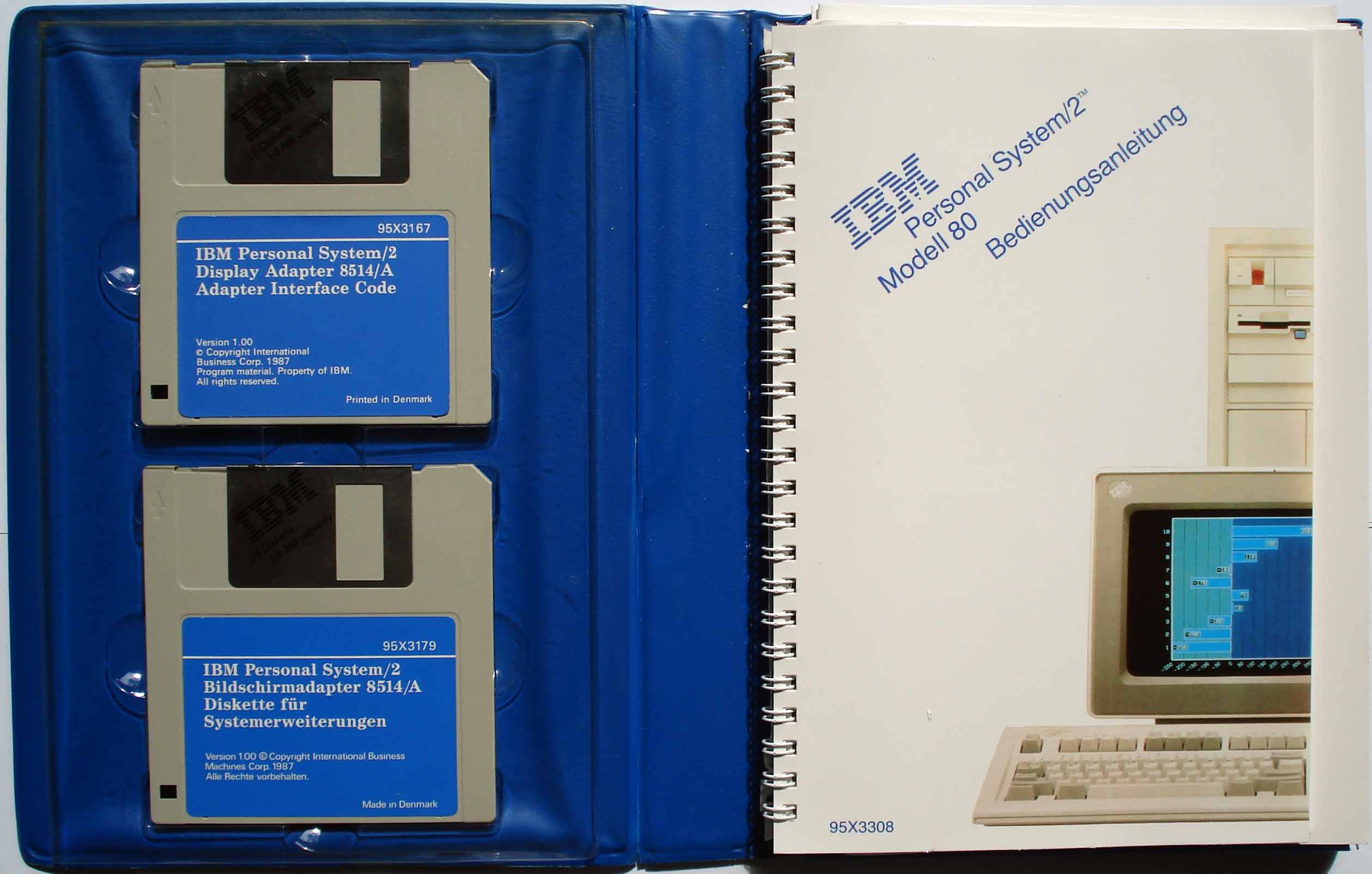
Computer manual folder opened with disks (german).
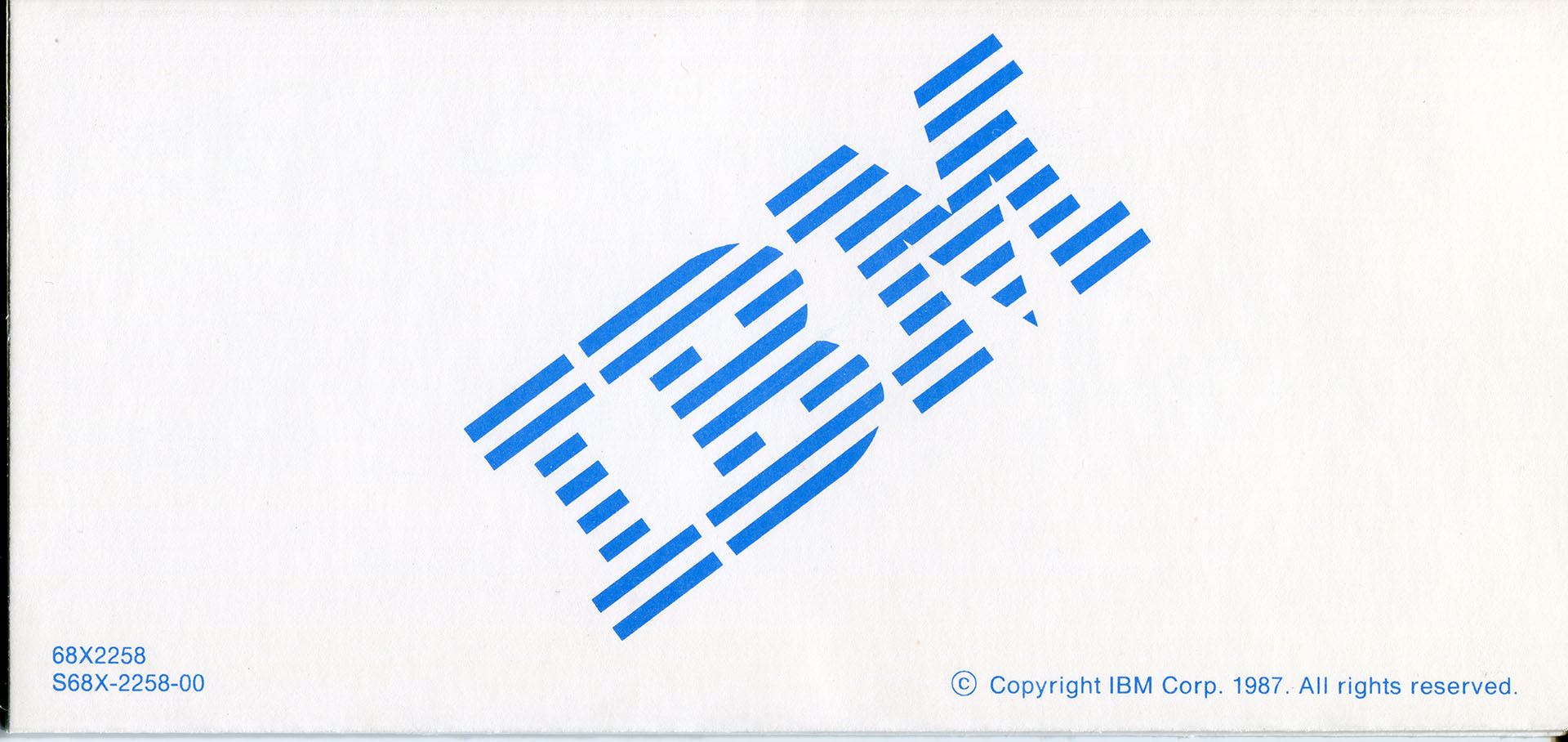
Installation Quick Start cover
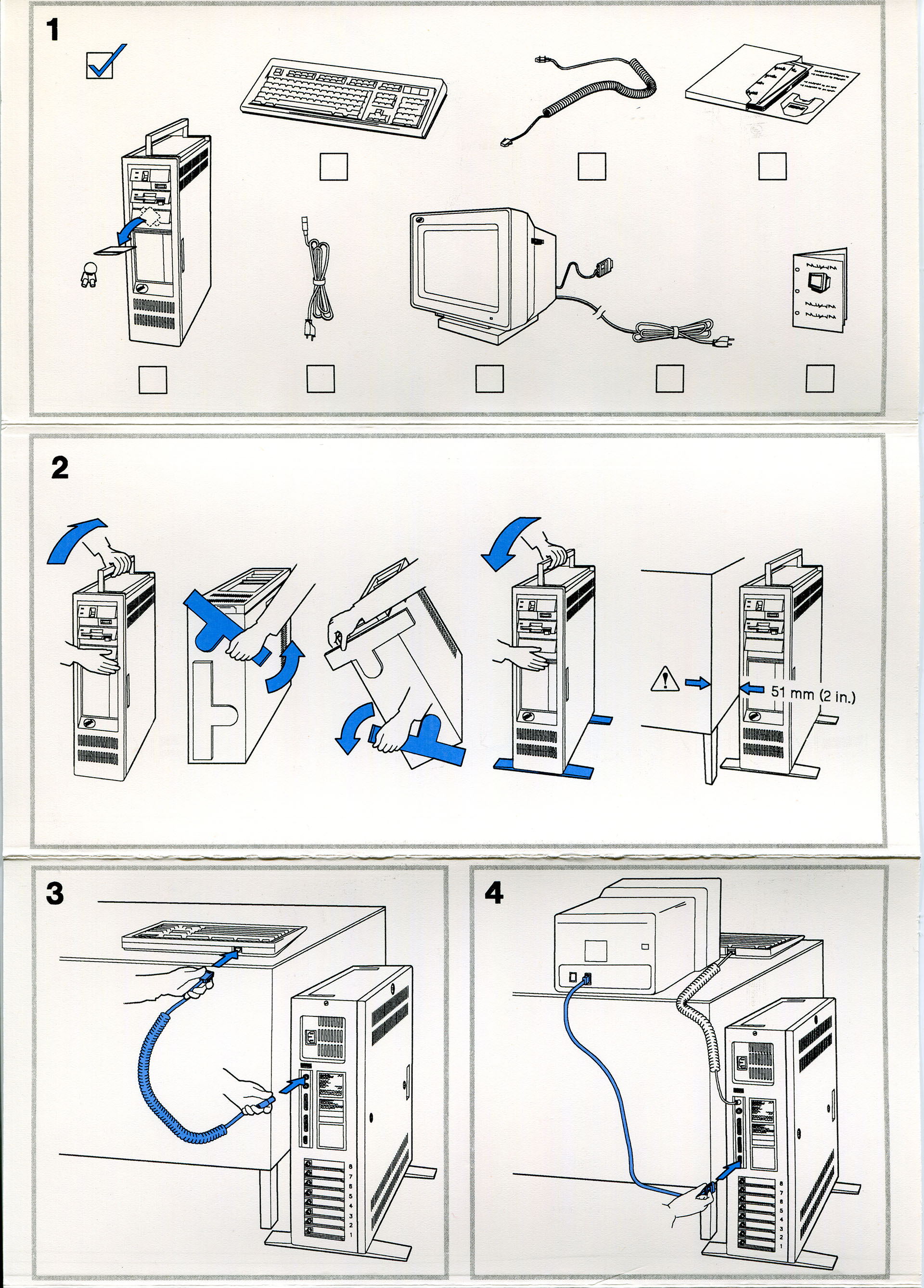
Installation Quick Start side 1.
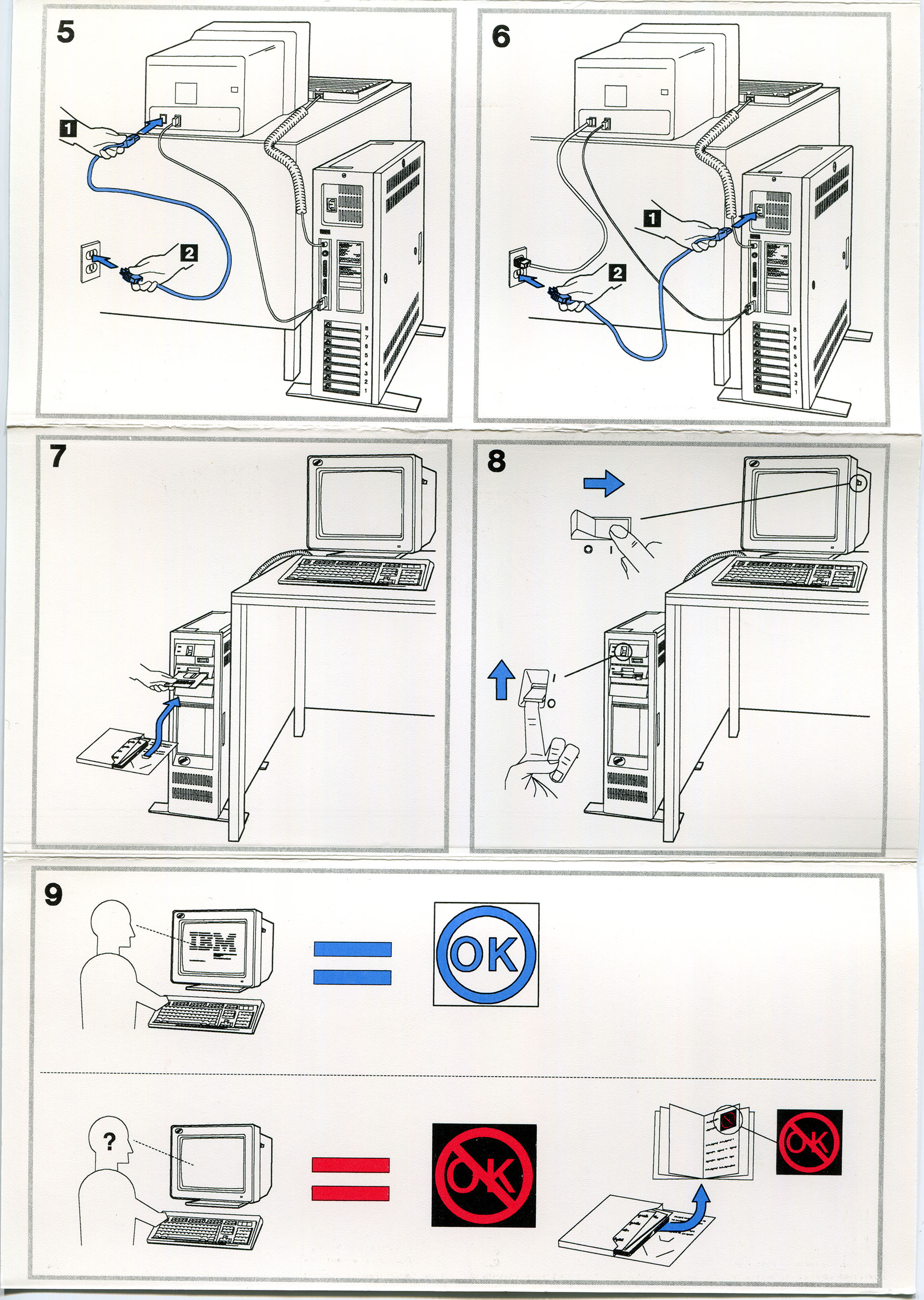
Installation Quick Start side 2
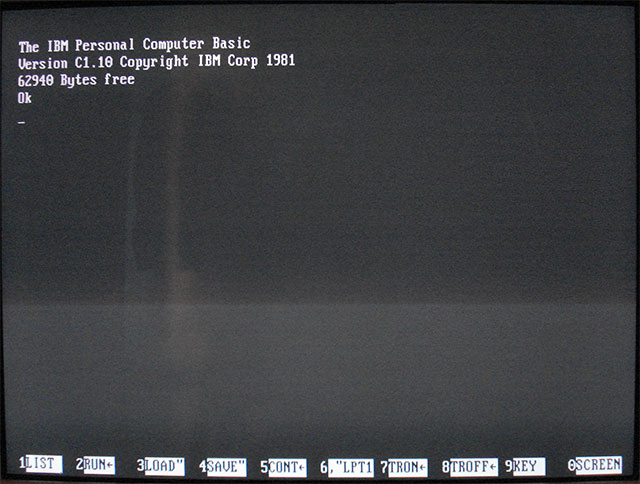
IBM cassette basic C1.10 from ROM. The IBM Model 80 still had Basic in ROM with support for cassette drives. IBM DOS included basica.com that extended the ROM basic with support to save to disk and more commands. (not shown)
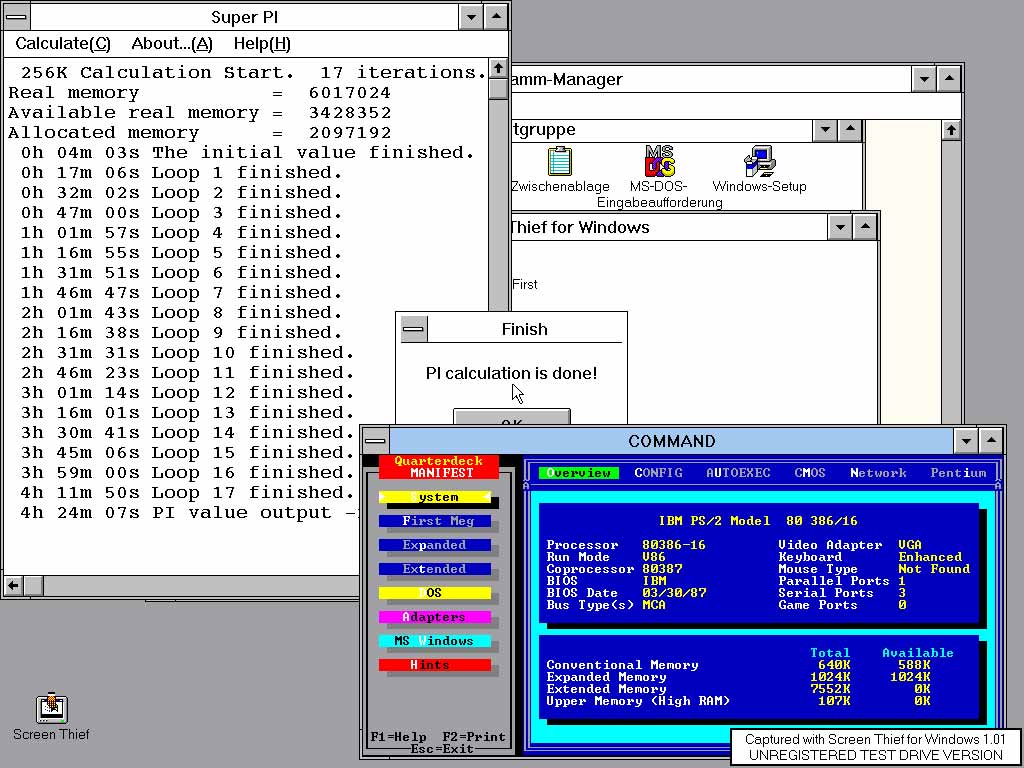
Running SuperPi on this old machine from 1987 because it can.
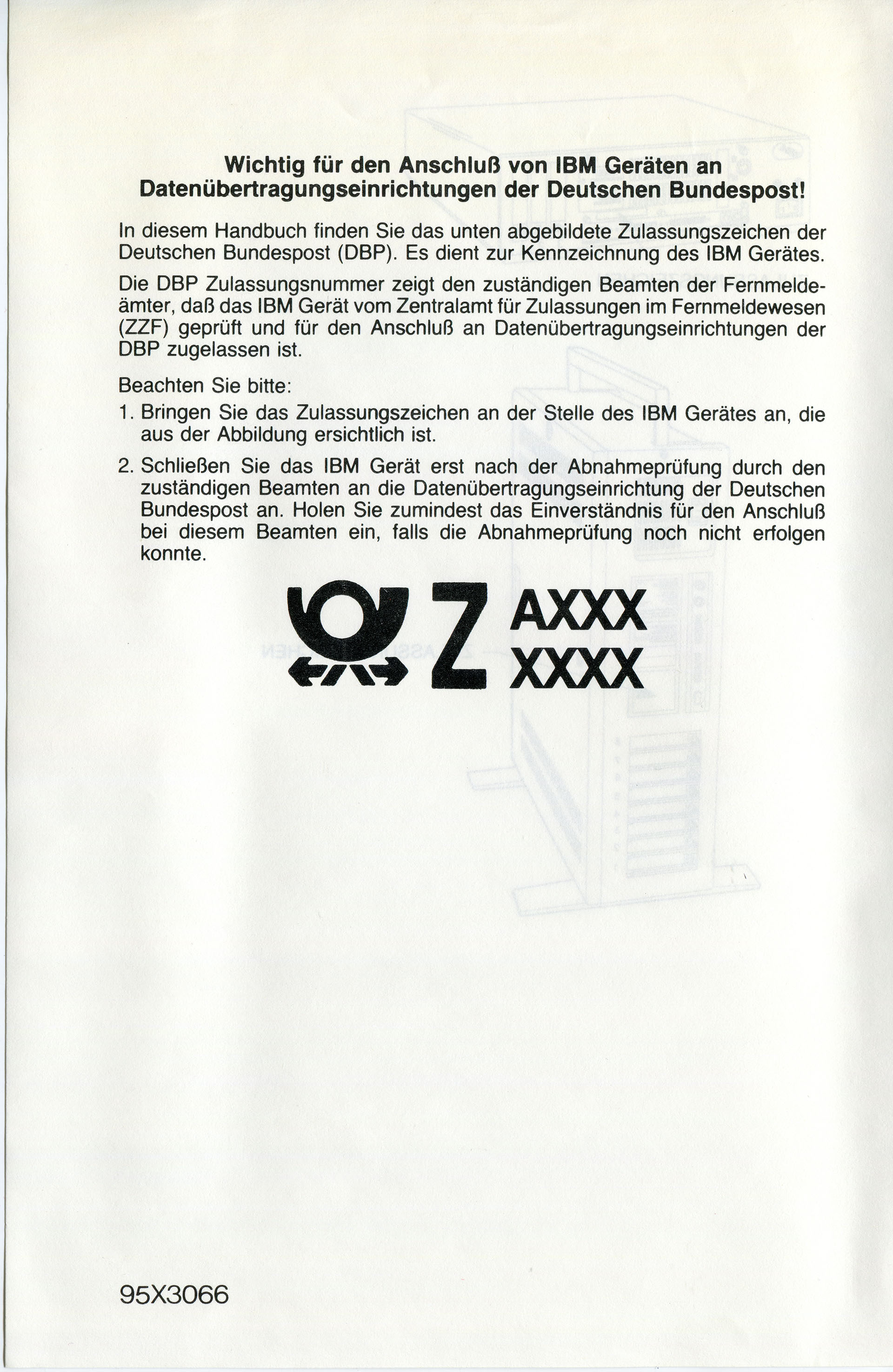
Note about the duty to attach the Usage License Sign of the German Federal Mail.
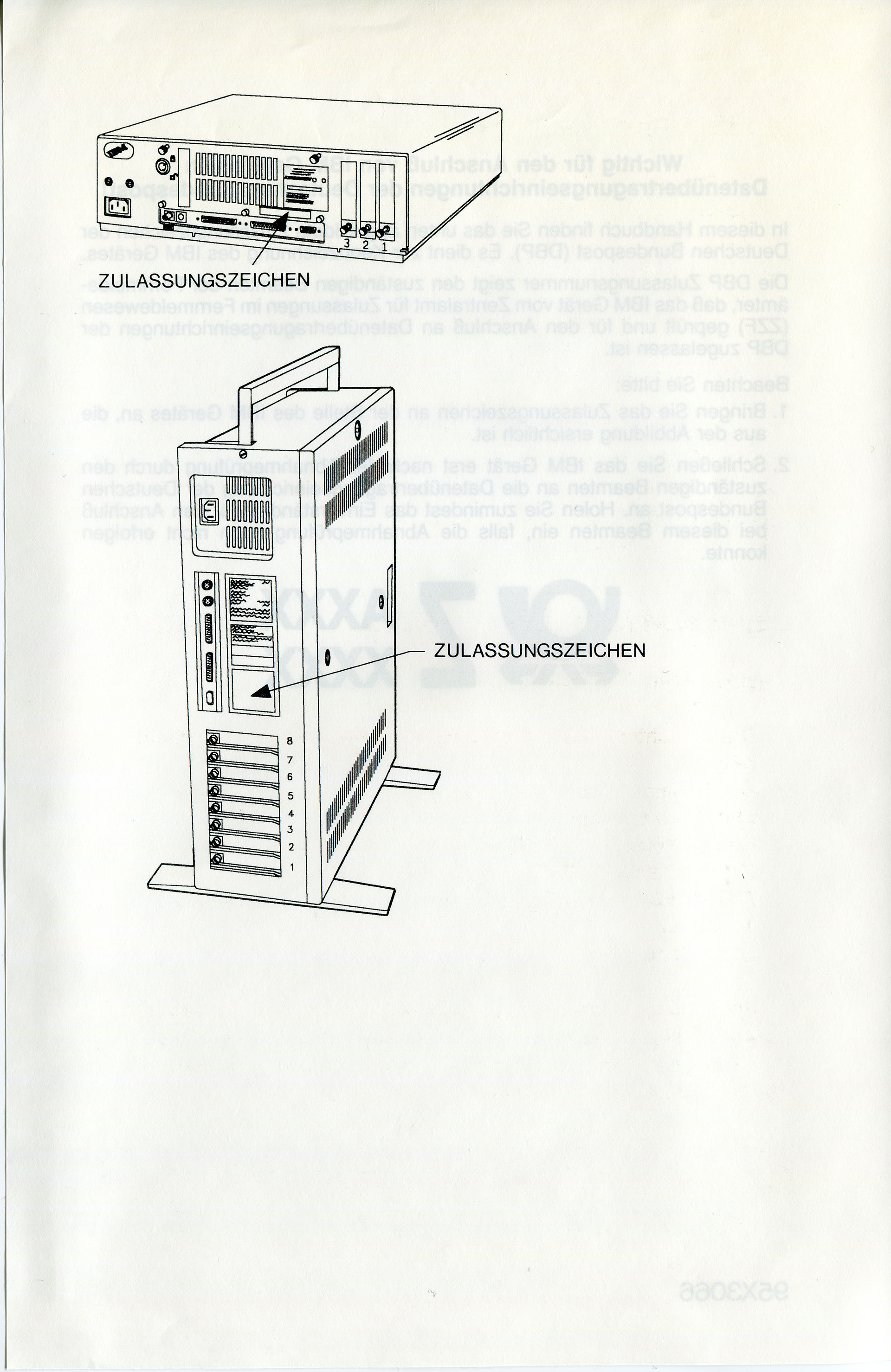
Note where to attach the Usage License Sign of the German Federal Mail.
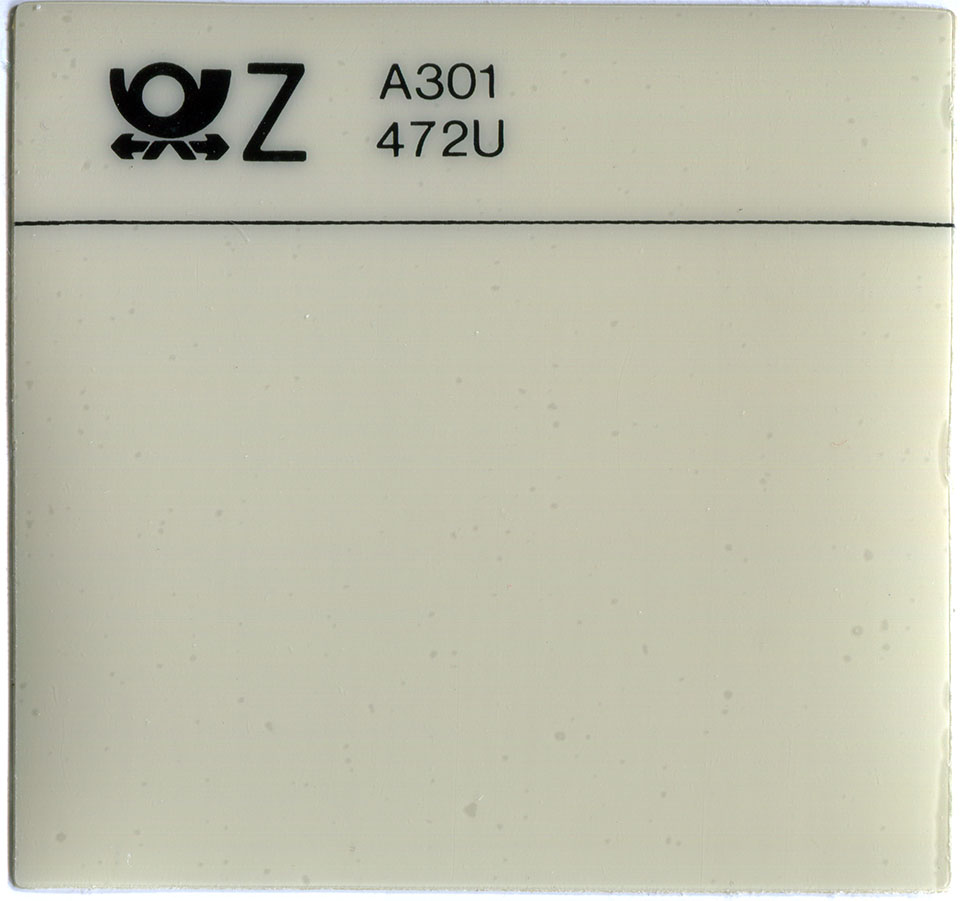
The actual Usage License Sign sticker of the German Federal Mail.
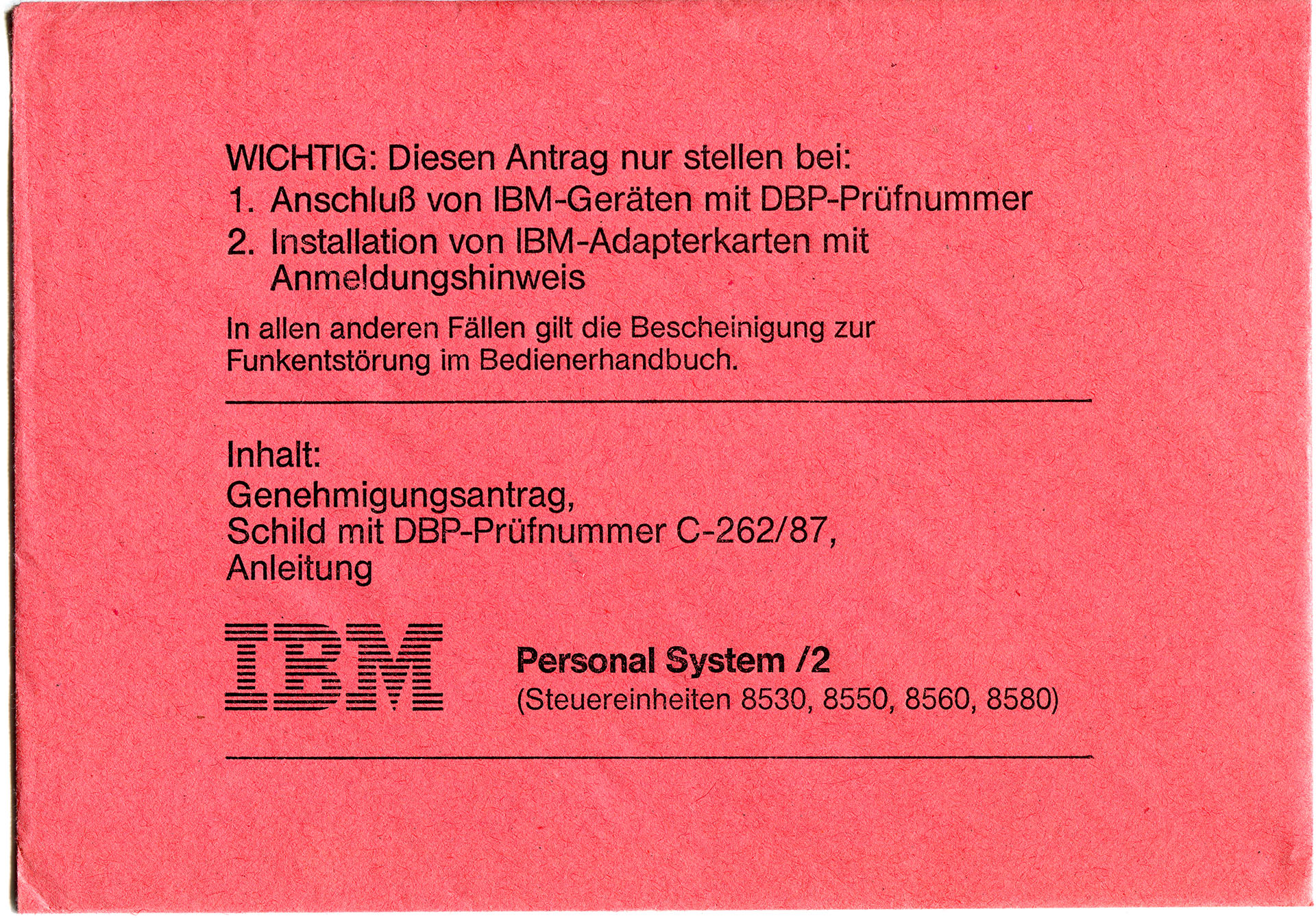
Evelope of the application for permission to use the IBM PS/2 Control Unit (Operation of a High Frequency Device) with devices of the German Federal Mail.
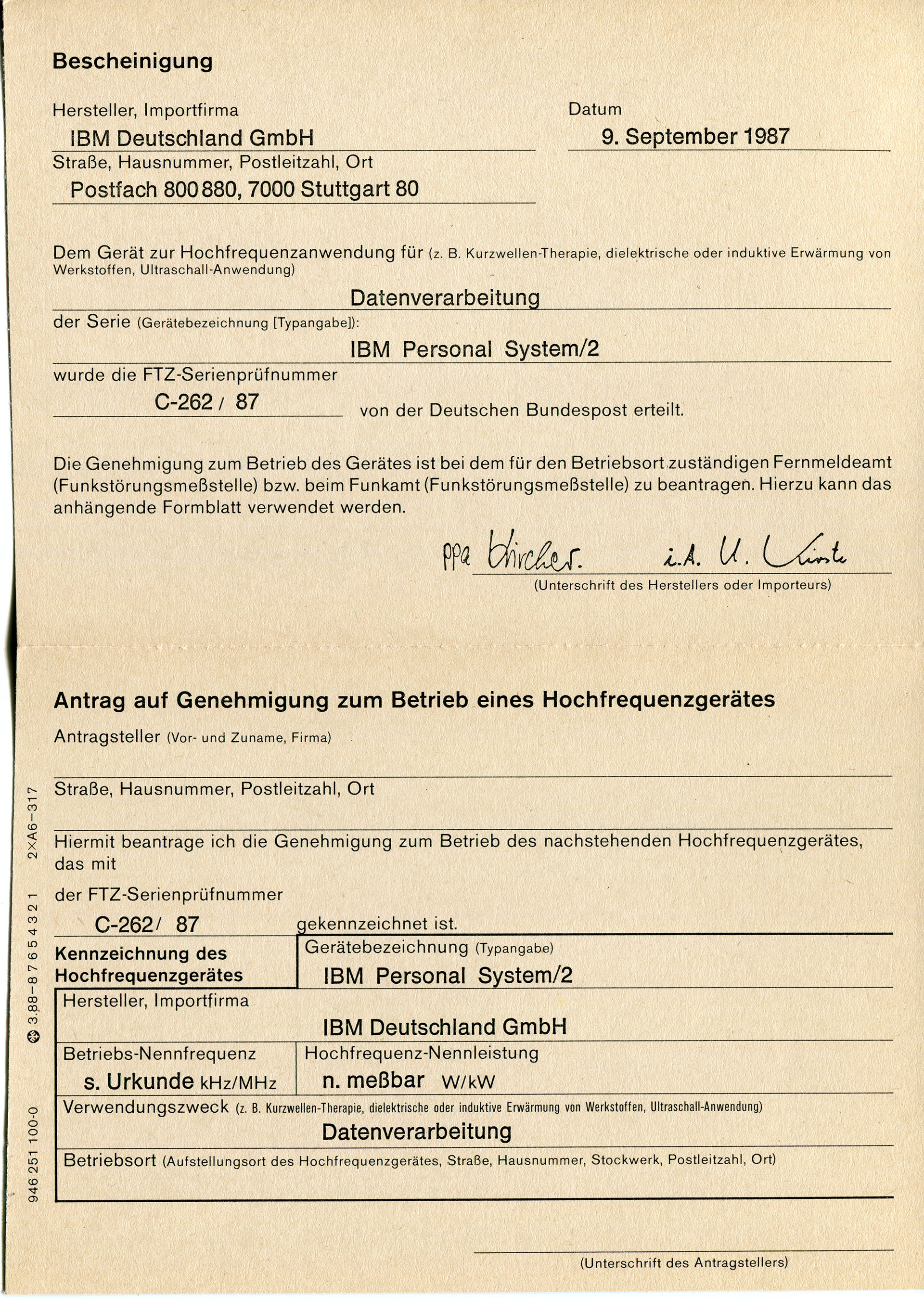
Application letter front side.
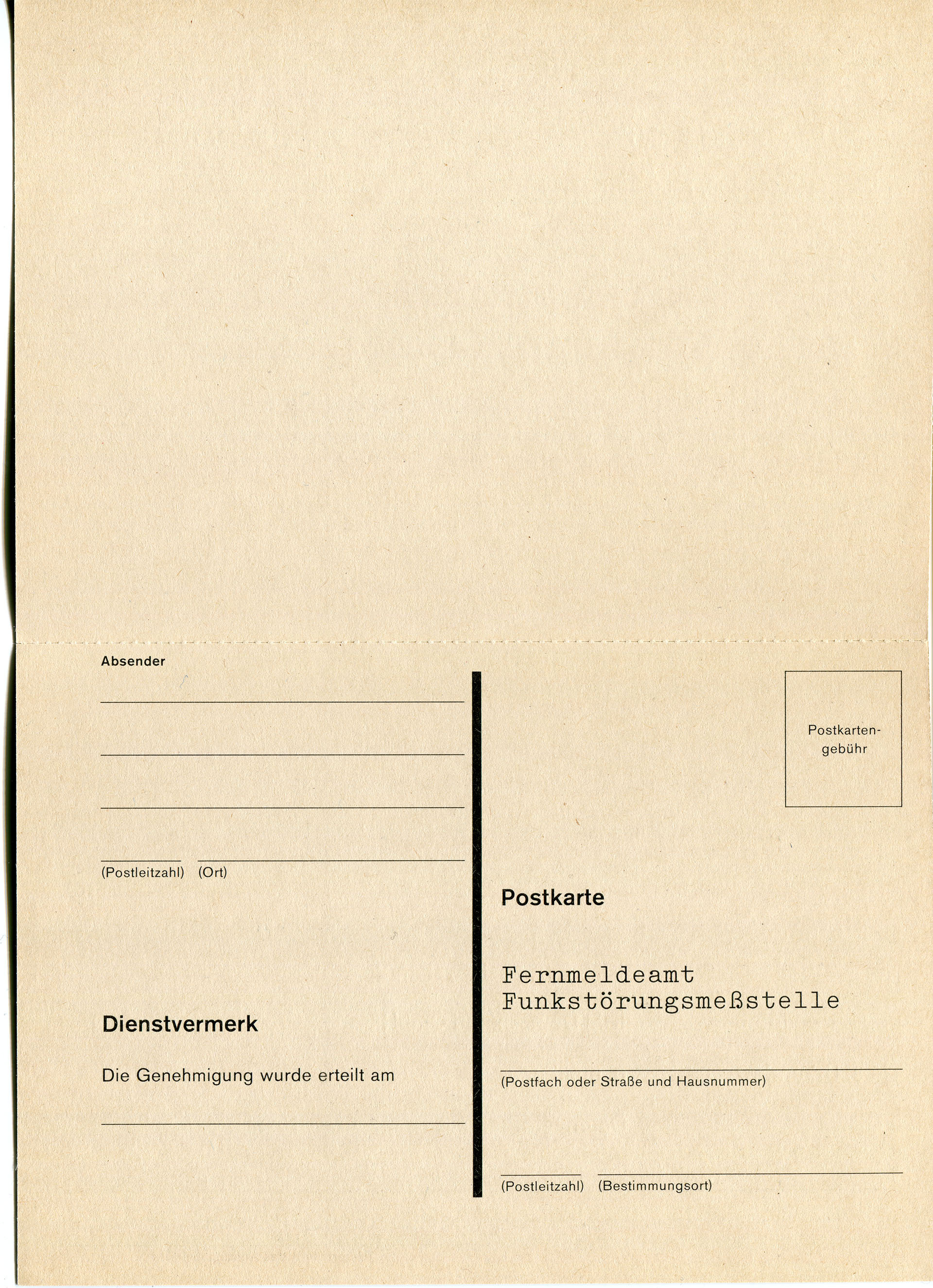
Application letter back side.
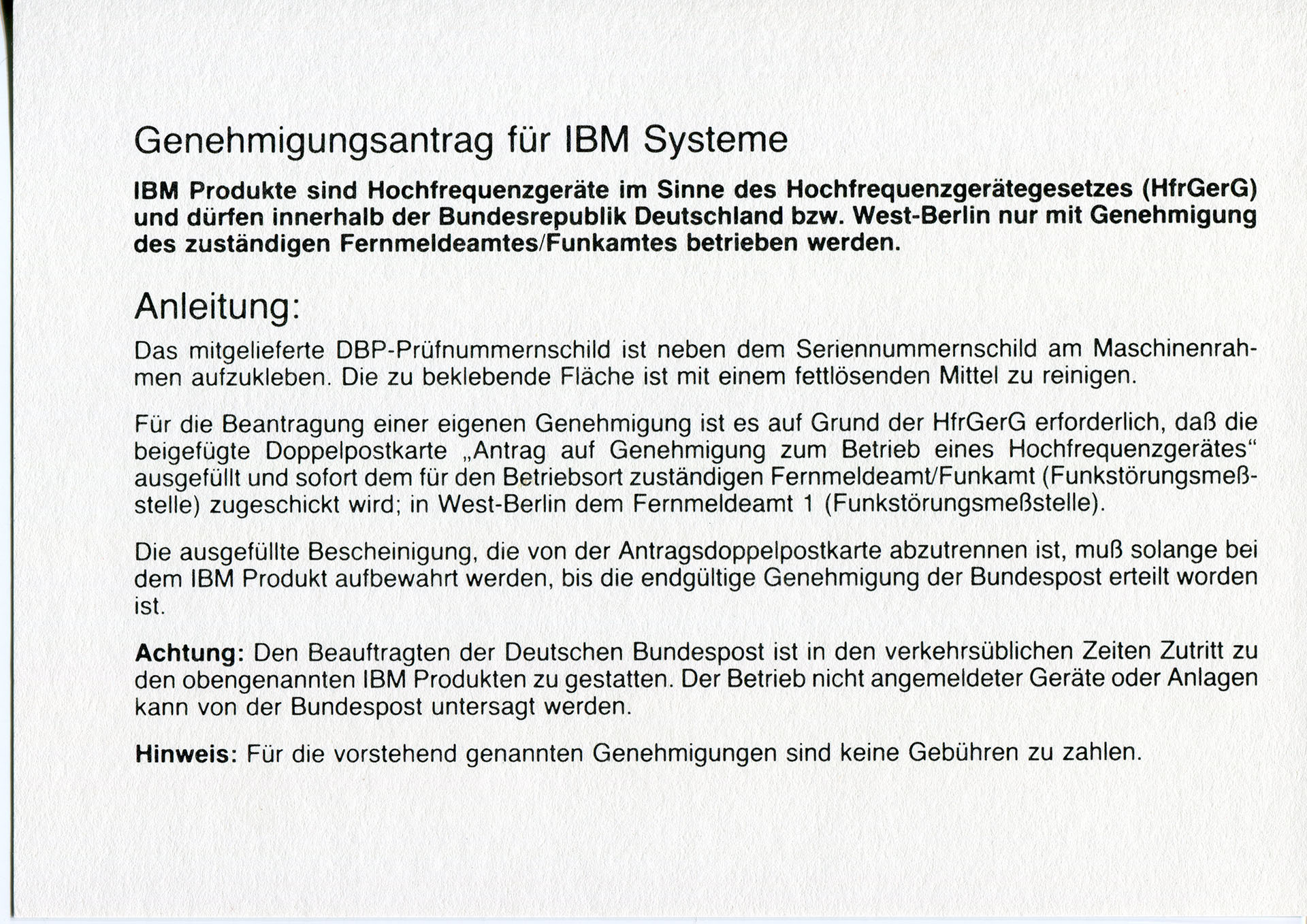
Description when to apply for permission of operation..
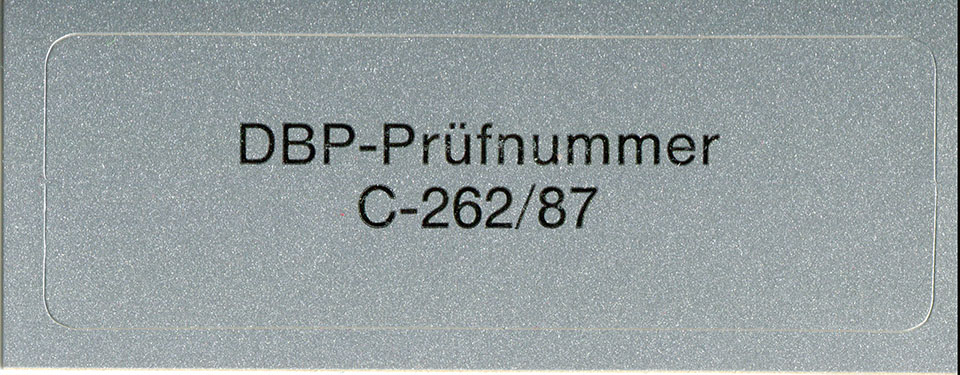
The actual certification number sticker.
Switching on the machine.
Running Pinball Fantasies with music.
Booting up Windows for Workgroups 3.11.The camera has problems adjusting to the interlaced mode. In reality nearly no flicker is visible.
